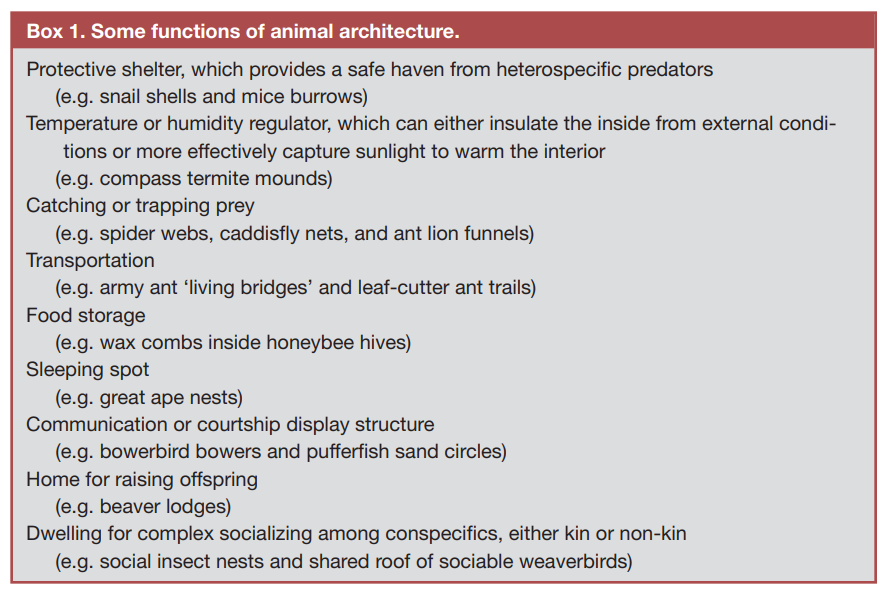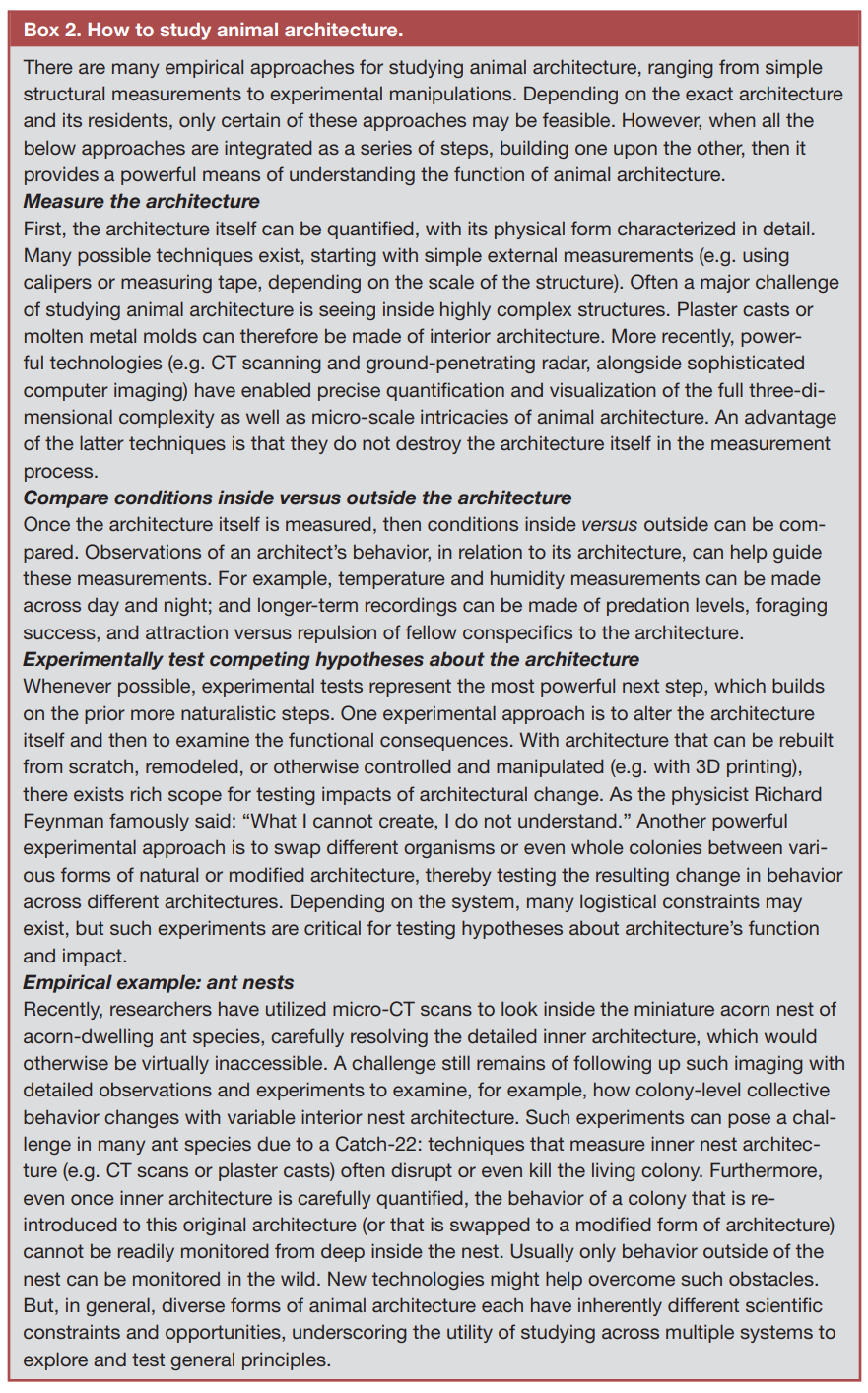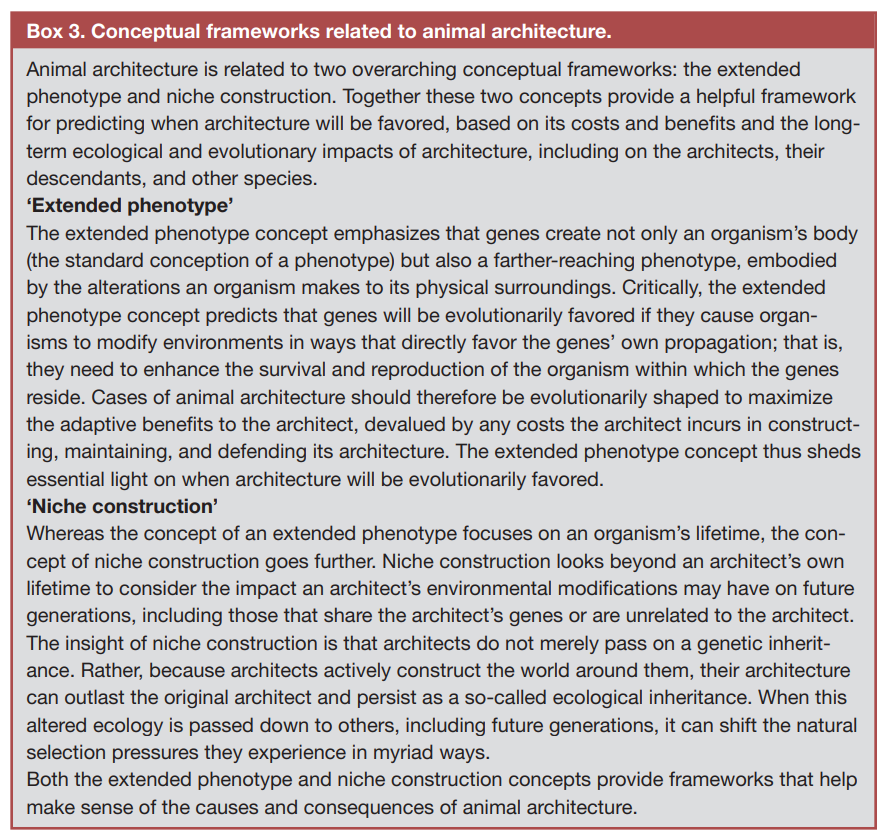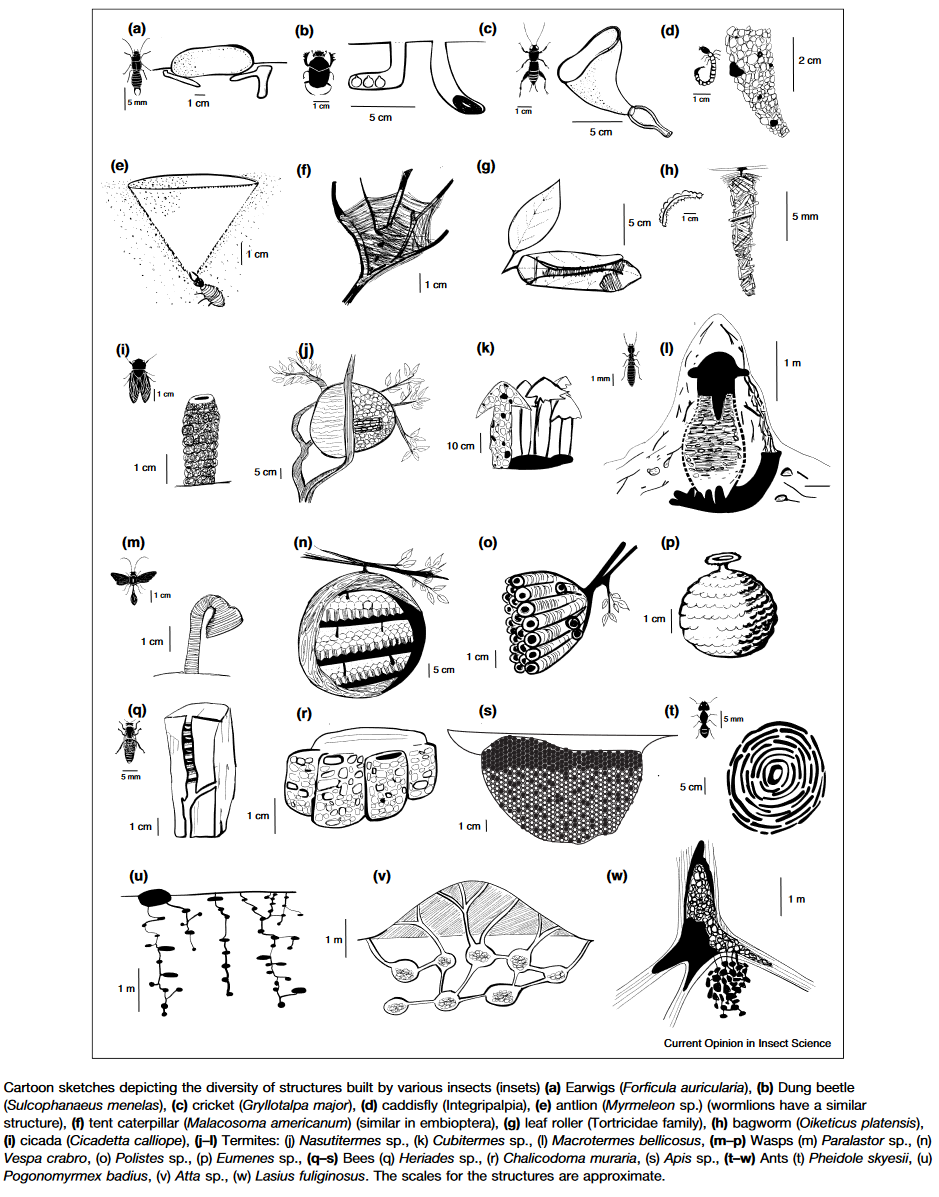Animal Design
Cf. animal architecture, animal architects



Laidre, Mark E. ‘Animal Architecture’. Current Biology 31, no. 22 (2021): R1458–64. https://doi.org/10/gsk6ff.
Construction by Insects
The relevance is that if we want to help insects we better understand why and how they construct because they are in a positon to teach us about what might suit for their needs as well as - more conventionally - for human needs.
On types of structures and the relationship to the constuctive behaviours:
Downing, Holly. ‘Construction Behavior of Insects’. In Encyclopedia of Entomology, edited by John L. Capinera, 1035–45. Dordrecht: Springer, 2008.


Sane, Sanjay P., Sree Subha Ramaswamy, and Sreekrishna Varma Raja. ‘Insect Architecture: Structural Diversity and Behavioral Principles’. Current Opinion in Insect Science 42 (2020): 39–46. https://doi.org/10/gsqb95.
On the interspecies impact of construction:

Marquis, Robert J., Christina S. Baer, John T. Lill, and H. George Wang. ‘The Impact of Construct Building by Caterpillars on Arthropod Colonists in a World of Climate Change’. In Caterpillars in the Middle: Tritrophic Interactions in a Changing World, edited by Robert J. Marquis and Suzanne Koptur, 509–37. Cham: Springer, 2022.
On the relationship between insect and human building:
Ireland, Tim, and Simon Garnier. ‘Architecture, Space and Information in Constructions Built by Humans and Social Insects: A Conceptual Review’. Philosophical Transactions of the Royal Society B: Biological Sciences 373, no. 1753 (2018): 20170244. https://doi.org/10/gfwbsk.
A brief overview of a special issue on insect-inspired engineering, for other examples of humans borrowing from insects:
Sane, Sanjay P. ‘Editorial Overview: Insect-Inspired Engineering: Mechanisms, Processes and Algorithms’. Current Opinion in Insect Science 42 (2020): vi–viii. https://doi.org/10/gsqccr.
Examples
Decorator Crab
"A decorator crab is another arthropod. It dresses up in sponge—encourages sponge to grow on its body surface, often producing specialized hooks on its body to attach the extra material. It does this far more completely than the hermit crabs who use anemones. A hermit climbs inside a snail shell and adds some anemones to the outside. A decorator crab uses its own body, its own shell, as a setting for the arrangement of other life. Often its bodily arboretum contains not just sponge but corals and other cnidarians. These are all stationary forms—and inedible ones, from most points of view. The crab is protecting itself. The decoration provides a combination of concealment and discouragement to many hunters, especially to an octopus."
Godfrey-Smith, Peter. Metazoa: Animal Life and the Birth of the Mind. New York: Farrar, Straus and Giroux, 2020.

Design principles of nests. Relevant to Design Interspecies Design
Jessel, Hadass R., Sagi Chen, Shmuel Osovski, Sol Efroni, Daniel Rittel, and Ido Bachelet. “Design Principles of Biologically Fabricated Avian Nests.” Scientific Reports 9, no. 1 (2019): 1–9. https://doi.org/10/ggh2nb.
Jessel, Hadass R., Lior Aharoni, Sol Efroni, and Ido Bachelet. “A Modeling Algorithm for Exploring the Architecture and Construction of Bird Nests.” Scientific Reports 9, no. 1 (2019): 14772. https://doi.org/10/gpwrnt.
References
Dobraszczyk, Paul. Animal Architecture: Beasts, Buildings and Us. London: Reaktion Books, 2023.
Bejan, Adrian, and J. Peder Zane. Design in Nature: How the Constructal Law Governs Evolution in Biology, Physics, Technology, and Social Organizations. New York: Doubleday, 2012.
Dodington, Edward M. How to Design with the Animal: Lessons in Cross-Species Architecture and Design. Houston: Indepently published, 2013.
Gould, James L., and Carol Grant Gould. Animal Architects: Building and the Evolution of Intelligence. New York: Basic Books, 2007.
Hansell, Michael H. Built by Animals: The Natural History of Animal Architecture. Oxford: Oxford University Press, 2009.
Backlinks